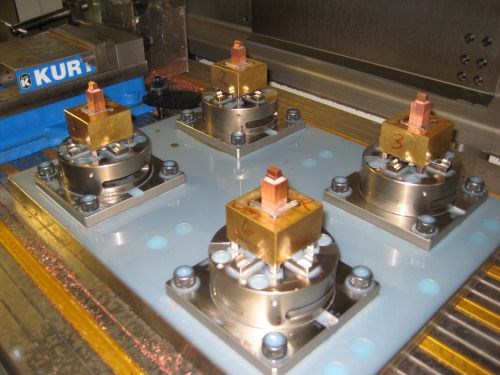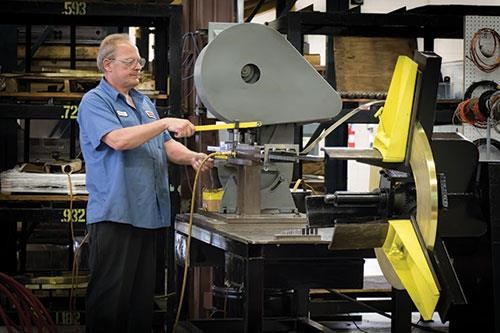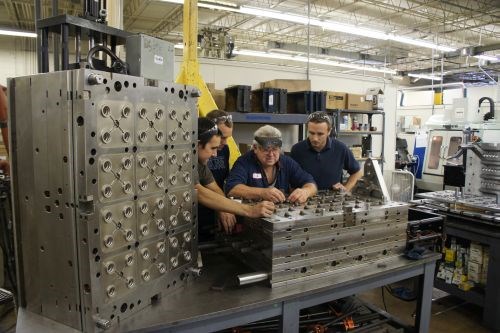Wisdom from the Moldmaking Sector
From processing strategies to shop culture to workforce development, spending two years with our sister publication exposed me to more than a few lessons that other manufacturers can probably leverage as well.
Share





ECi Software Solutions, Inc.
Featured Content
View More

Autodesk, Inc.
Featured Content
View More

It’s great to be back at Modern Machine Shop!
The last time my byline appeared in this magazine was late 2013, right before I transitioned to our sister publication, MoldMaking Technology. Two years of focusing solely on the needs, ambitions, problems and success stories of plastic injection moldmakers certainly taught me a lot about that industry. Yet, at the same time, on some level, manufacturing is manufacturing. And I have no doubt that much of what I learned will come in handy in my efforts to provide MMS readers with new insights for machining parts and running businesses. Here are a few examples of lessons from the toolmaking sector that can likely be applied to other industries as well:
- A high-mix, low-volume niche doesn’t necessarily preclude standardization and automation. Indeed, many mold manufacturers had the same answer when I asked about the most significant changes in their business during the past decade or so. That is, the industry has transitioned from craft to science—or, as many shop leaders like to put it, from “mold making to mold manufacturing.”
The idea is to make the complex process of building a mold more systematic—more like an assembly line—by reducing it to a series of simpler steps that are honed and improved through repetition. Ideally, designs are 100-percent complete prior to any work, and each department executes its role in strict adherence to the CAD model and preplanned manufacturing strategy, even down to fits and clearances. Primarily by reducing variation, the “mold manufacturing” approach improves efficiency, quality and process predictability while facilitating the use of pallet changers, robotics and other automation. This article on Graphic Tool covers the basics of what that approach entails.

Implementing standardized workholding is a critical early step toward a more process-driven, assembly-line-like approach to mold production. This shot (courtesy of B.A. Die Mold) depicts copper electrodes mounted in Erowa fixtures.
- Little things count. When every job involves building what is essentially a one-off machine, even the most seemingly minor inefficiencies can have an outsized impact. This piece covers a few of the strategies that A1 Tool Corp. uses to facilitate attention to detail, including the expansion of the assembly-line-like approach described above to cover more than just core metal-cutting operations.

At A1, cutting baffles on a punch press has proven more versatile and more efficient than the previous process of cutting the stock in two operations on a bandsaw and knee mill. Improvement ideas like this are often a result of departmentalizing the shop and specializing the staff. (Photo courtesy of Creative Technology Corp.)
- It’s all about the people. Adapting to new realities involves transitioning more than just processes and technology. The role of people changes as well, and that can sometimes be difficult. That’s why it’s important to show employees that they’re viewed as more than just numbers on a spreadsheet. A1, for example, has spent more than $1 million on facility upgrades, such as a new workout room, that have no direct impact on the moldmaking process. MMT’s 2015 Leadtime Leader: Honorable Mention award winner, Dynamic Tool & Design, has adopted a particularly interesting (and easy to implement) award system for showing appreciation for its most valuable resource, not to mention an unconventional ownership structure that ensures employees’ stake in the business goes beyond just a regular paycheck.
- Education is key. Workforce development is critical for all manufacturing, but the level of problem-solving and critical thinking involved in designing and manufacturing a functioning plastic injection mold has this sector particularly concerned. Many conduct regular tours, donate equipment to local high schools and community colleges, advise those institutions on curriculum, and participate in events like job fairs and the annual Manufacturing Day. There’s also a lot of interest in apprenticeship programs. In North Carolina, one model that seems to be catching on is based heavily on approaches taken by the Germans and Swiss since the middle ages.

Not all skills can be formally taught, and mold manufacturers require a broader set of knowledge than just running machines. Janler Corp. makes a point to ensure its youngest toolmakers spend enough supervised, hands-on time performing preventive maintenance to pick up on things that have become second nature for their seasoned mentors.
- We’re all in it together. Moldmakers are a tight-knit group. Anyone who doubts that need only attend any event put on by the American Mold Builders’ Association (AMBA), which offers everything from networking opportunities to skills certification programs to formal shop tours where moldmakers invite peers to critique the finer points of their operations. I’ve had more than a few shop leaders express the sentiment without a vibrant community of North American toolmakers, OEMs will turn elsewhere for their molds. There’s a sense of solidarity there, a sense of “us versus them,” and a recognition that a shop’s individual reputation can be heavily impacted, fairly or not, by that of its peers. In my view, the same is true of the industry as a whole.
Read Next
Registration Now Open for the Precision Machining Technology Show (PMTS) 2025
The precision machining industry’s premier event returns to Cleveland, OH, April 1-3.
Read MoreBuilding Out a Foundation for Student Machinists
Autodesk and Haas have teamed up to produce an introductory course for students that covers the basics of CAD, CAM and CNC while providing them with a portfolio part.
Read More5 Rules of Thumb for Buying CNC Machine Tools
Use these tips to carefully plan your machine tool purchases and to avoid regretting your decision later.
Read More














.png;maxWidth=150)





















.jpg;maxWidth=300;quality=90)


.jpg;maxWidth=300;quality=90)




